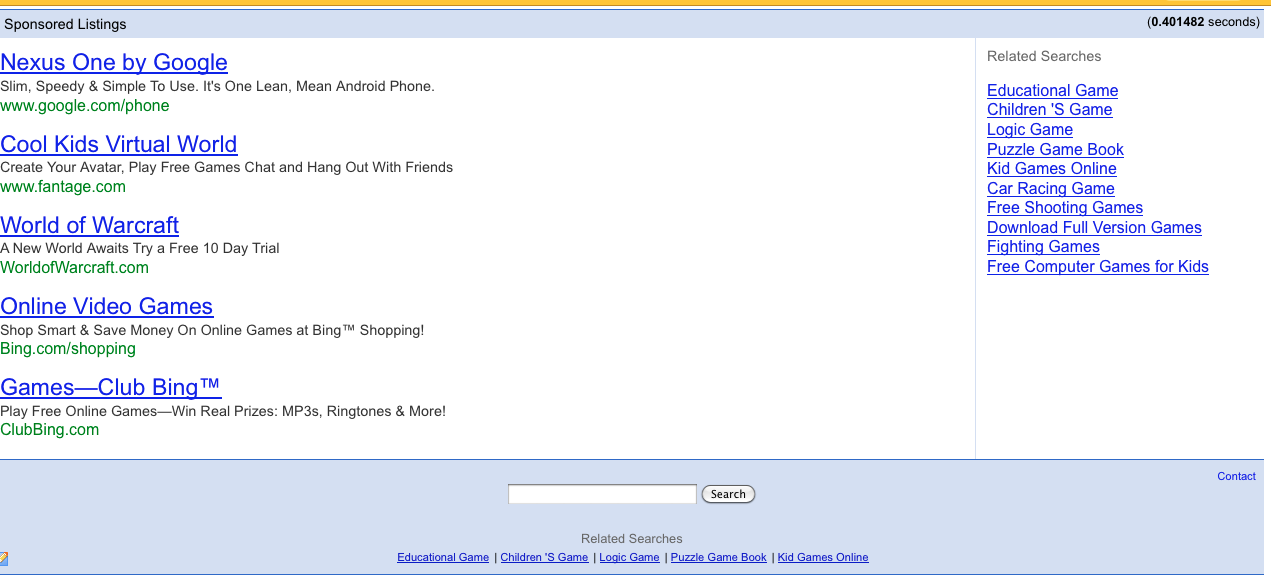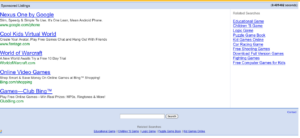We’ve discussed in the past what a great source of leads Google’s content network can be- it can help you reach customers you didn’t even know you wanted to reach, or customers who didn’t even know they wanted your product!
But the content network isn’t all fun and games. You can discover and sell to new consumer audiences, but guess what? You’re also exposing yourself to new scammer audiences! Neat.
To understand the cautions I’m going to extend here, you need to understand how the content network operates. If you look at Google’s official “sample” of content network partners, things look fabulous! My ads for flash frozen organic baby food can show on Baby Center and Dr. Spock.com! But as anyone who actually advertises on the content network knows, Dr. Spock isn’t paying Google’s bills. We can all try to run our baby food ads there all day, and they’re still only going to show 3-7 ads on a page.
Clearly, more sites showing ads = more clicks = more money for Google. Therefore, they would like as many sites in their advertiser network as possible. To be fair, more money for Google should also mean more money for us, if we do a good job of making sure we’re matched to industry-relevant sites and know how to convert our traffic. But don’t forget there’s another player here- the middleman, whoever owns the site you’re advertising on. These people can show ads on just about any type of site (including parked domains) via Google’s AdSense targeting. The “Middleman” advertiser determines the topic he wants his page to show ads for and if your ads match that content or specified topic, they can show there. You pay Google for the clicks you receive on that site, Google pays Middleman, your customers pay you, everyone is happy. Or so it should be.
Though Google tries- often successfully- to match your ads to relevant sites, this isn’t Advertiser Utopia and things don’t always come up sunshine and rainbows. There are Sinister Middlemen in the world, and they want to steal all of your money. Unfortunately, those experienced in PPC understand the term “click fraud”…and if you run ads on the content network, you’d better understand it especially well, because you’re going to find it.
Take for example the lovely culbpenguin.com and its friends, clubpinguin.com, wwwclubpengun.com, and about seventy other variations on the perfectly benign Disney site, www.clubpenguin.com. They started showing up in our content network automatic placements a couple of months ago, en masse, and spent nearly $1000 in one day.
Somehow hundreds and hundreds of people visiting the site pictured below, a misspelling of a children’s game website, were clicking on book publishing ads. Curiously, none of them were converting. How interesting. Weeding them out and asking for a refund from Google was a fiasco. Some of the sites are gone today, and some are still live- showing ads based on a different theme, as you can see. It’s a disaster, and if the URLs for these had been more varied, it would have taken a lot longer to catch on to the problem, since most of them did not spend a lot of money individually. I’m sure we are being click-defrauded every day on the content network, but working with the content network at this point in time is a matter of making sure you reduce fraud as much as possible (by doing things such as excluding your ads from being shown on parked domains and error pages and keeping watch for unusual placements or traffic behaviors) and making sure you’re seeing a positive ROI from this distribution network.
So how do you determine your ROI? Conversion metrics can help a lot with this, but as anyone who has ever monitored a website’s form submissions could probably tell you, little robots know how to submit forms, too. It doesn’t seem to be as widespread as click fraud, but conversion fraud- I’m afraid it could be the wave of the future in cheating other people. Whether it’s for the same old reasons that people like to submit spam forms, or it’s Sinister Middleman trying to convince you that his site does, in fact, convert so you should keep targeting it, this equals bad data for your ROI determinations.
If your website’s leads come via form submissions or inquiries without any type of spam reduction method, and don’t require payment, know that there is a possibility they could be invalid. If you don’t have direct access to your actual lead data- the information submitted by the converting visitor- you need to be sure to coordinate with whoever has that data to ensure that the conversions you see are real human leads. I’ve seen conversions from sites I thought were nonsense be actual leads, and I’ve seen conversions from nonsense sites be total trash. The content network is much like everything else in PPC- there’s just no way to effectively manage without valid, visible data throughout the impression-to-conversion process. And it never hurts to keep your eye out for giggling thieves.






